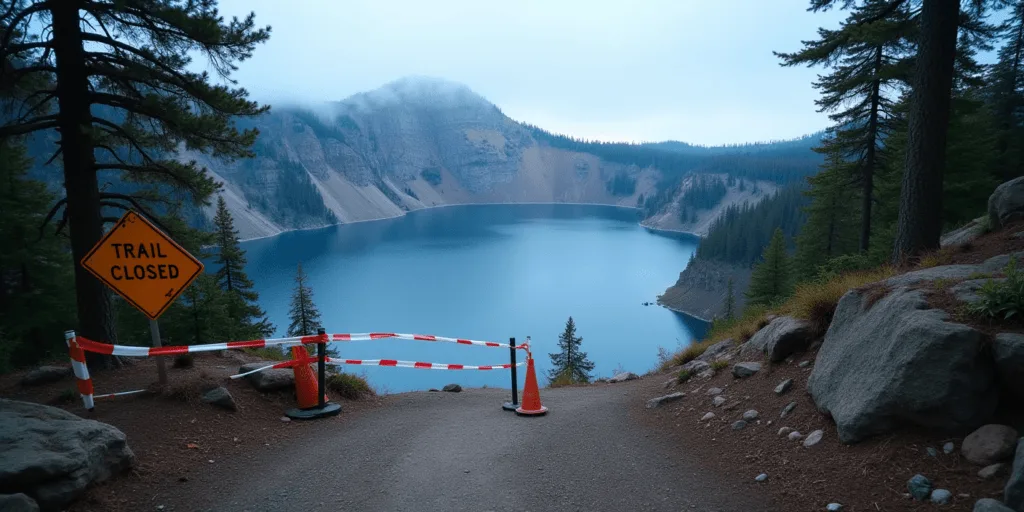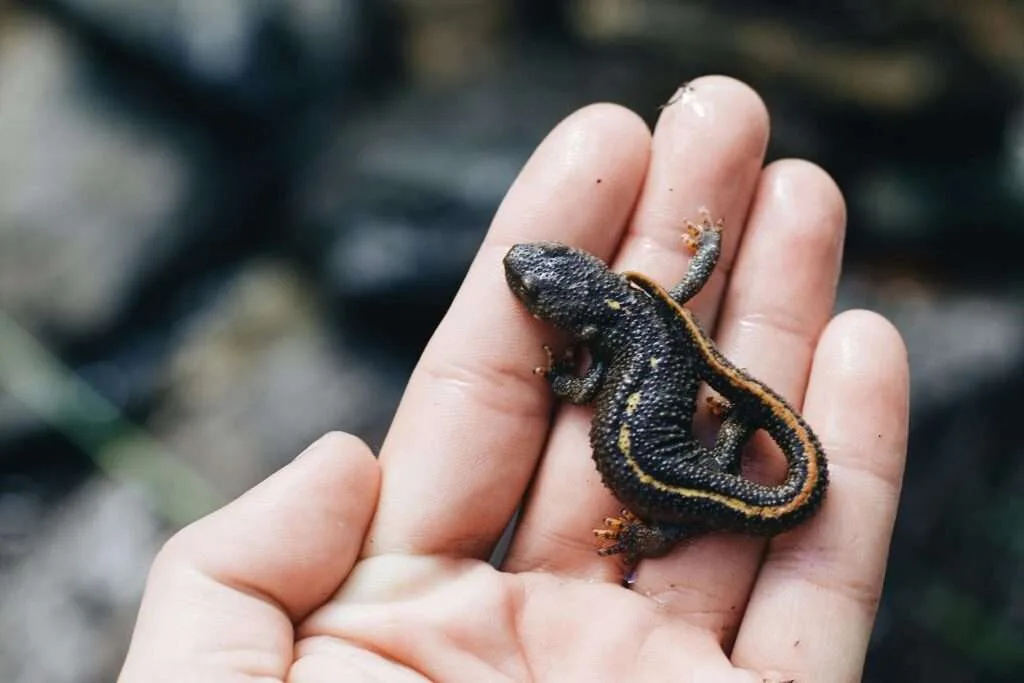Table of Contents
Crater Lake National Park, home to the deepest lake in the United States, is undergoing significant changes that will impact visitors, wildlife, and park operations. From upcoming trail closures to conservation efforts for the unique Mazama newt, here’s everything you need to know about the latest developments at this iconic natural wonder.
Cleetwood Cove Trail Closure: No Swimming or Boat Tours Until 2027
You’ll have to wait a bit longer if you’ve ever wanted to jump into Crater Lake’s crystal-clear waters. The single route to the lake’s coast, the Cleetwood Cove Trail, will close at the end of summer 2025 to undergo a significant restoration effort. In order to provide future visitors with a safer and more sustainable experience, this crucial effort will address issues such as soil erosion, rockfall hazards, and outmoded amenities.

During the two-year closed all water-based activities will be suspended, including diving, swimming, and the well-known boat cruises to Wizard Island. Nonetheless, visitors can still explore additional hiking trails in the park and take in the stunning views from the rim.
Saving the Mazama Newt: A Fight Against Invasive Species
The Mazama newt is an unique animal that can only be found in Crater Lake. The invasive signal crayfish, which was brought to the lake in 1915, is now posing a threat to this rare species. By killing the Mazama newt, the crayfish lowers its number and upsets the fragile ecosystem of the lake.

Given the severity of the problem, the U.S. Fish and Wildlife Service is thinking about using the Endangered Species Act to protect the Mazama newt. Conservationists encouraged this action, which may result in major attempts to manage the invading crayfish population and save the native fauna of the lake.
Park Management Under Scrutiny: Concessionaire Contract Review
Another challenge facing Crater Lake National Park is the management of visitor services. Crater Lake Hospitality, a subsidiary of Aramark, is under review by the National Park Service due to complaints about poor facility maintenance, inadequate staff training, and unsatisfactory living and working conditions.

The park’s lodges, restaurants, and tour facilities must continue to provide high-quality services to guests in the event that the contract is terminated, thus a new operator will need to take over. The commitment of park administrators is to address these problems in order to enhance the overall experience of visitors.
What These Changes Mean for Visitors
While these developments may pose temporary inconveniences, they are essential for preserving Crater Lake’s natural beauty and ecological health. Visitors can still enjoy panoramic views, scenic drives, and hiking opportunities around the lake’s rim. Additionally, the conservation efforts aim to ensure that future generations can experience Crater Lake in all its pristine glory.
If you’re planning a trip to Crater Lake in the coming years, stay updated on park conditions and closures through the National Park Service’s official website.
Final Thoughts
One of the most beautiful places in the US is still Crater Lake National Park. Although there may be changes in the future, they will demonstrate a dedication to sustainability, safety, and conservation. These changes serve as a reminder of the continuous efforts to preserve this natural treasure for future generations, regardless of whether you are a first-time visitor or a lifelong park enthusiast.
What are your thoughts on these changes? Let us know in the comments!
Frequently Asked Questions – Crater Lake
1. Why is the Cleetwood Cove Trail closing?
The Cleetwood Cove Trail will be closed for two years starting in late 2025 for rehabilitation. The project aims to improve safety by addressing soil erosion, rockfall hazards, and outdated facilities.
2. Can I still visit Crater Lake during the trail closure?
Yes! The lake remains open, and visitors can still enjoy scenic viewpoints, rim drives, and other hiking trails. However, swimming, diving, and boat tours will not be available during the closure.
3. What is happening with the Mazama newt?
The Mazama newt, native to Crater Lake, is threatened by invasive crayfish. Conservationists are pushing for its protection under the Endangered Species Act to prevent further population decline.
4. Will there be any changes to lodging and dining at Crater Lake?
The National Park Service is reviewing its contract with Crater Lake Hospitality due to concerns over management quality. If a new provider is chosen, there may be improvements in park accommodations and visitor services.
5. Where can I get updates about Crater Lake’s status?
For official information, visit the Crater Lake National Park website or follow their social media pages.


